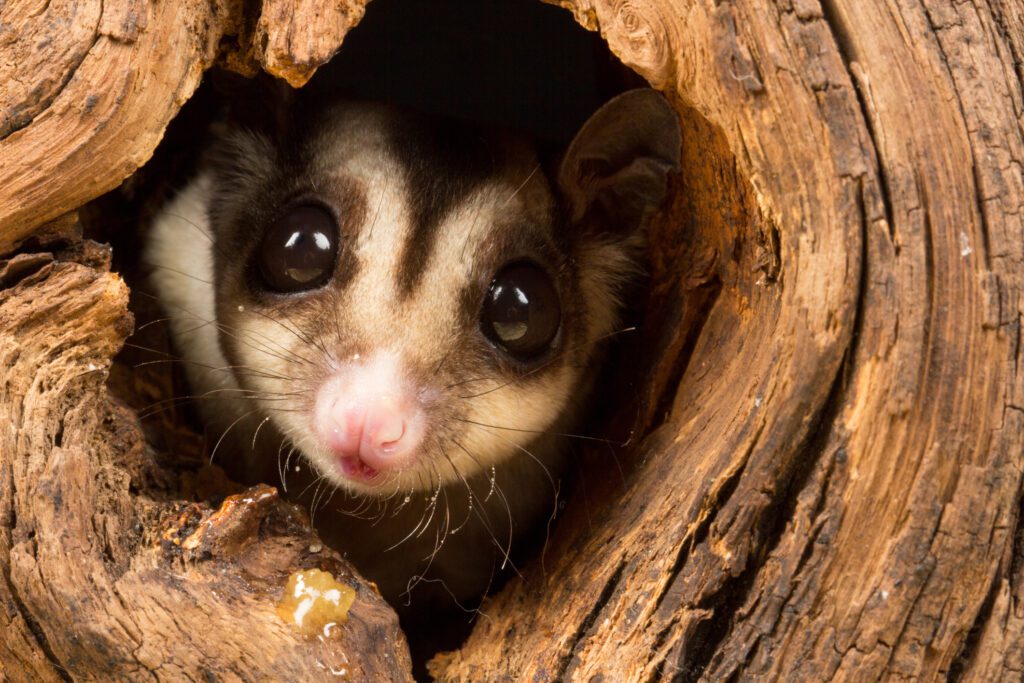What Should I Add to My Sugar Glider’s Cage
At Paws and Claws Animal Medical Center, our passion for the well-being of all animals extends to the captivating world of sugar gliders. These nocturnal marsupials are beloved for their charming personalities and unique gliding abilities. To ensure the health and happiness of your sugar gliders, we’ll explore the vital components that you should consider adding to their cage.

1. Proper Cage Dimensions
The foundation of creating a comfortable living space for your sugar gliders is selecting an adequately sized cage. We recommend a cage that offers at least 2 feet in height and 2 feet in width for one or two sugar gliders. A larger enclosure will provide more room for your pets to move and explore, ultimately keeping them active and content.
2. Snuggly Sleeping Pouches
Sugar gliders are creatures of the night, and they need a cozy spot to rest during the day. Sleeping pouches or hammocks are essential additions to your sugar glider’s cage. These soft, secure hideaways are where they can curl up together for a peaceful slumber.
3. Exercise Wheel
To keep your sugar gliders in good physical condition and provide them with entertainment, consider adding a safe and solid exercise wheel to the cage. It’s important to ensure that the wheel’s design is suitable for their delicate tails, allowing them to exercise without any risk.
4. Climbing Accessories
Sugar gliders are natural climbers and explorers. Encourage these instincts by incorporating branches, perches, or ropes into their cage. These additions mimic their natural habitat, promoting physical activity and mental stimulation.
5. Engaging Toys
Preventing boredom is essential for the well-being of your sugar gliders. A variety of toys and enrichment items will keep their minds occupied. Consider including puzzle feeders, foraging toys, and chewable items, and remember to rotate these toys regularly.
6. Cozy Nesting Materials
Sugar gliders are instinctive nest-builders. Create a comfortable environment by providing nesting materials like shredded paper, fleece, or leaves. Your sugar gliders will use these materials to construct cozy sleeping and hiding spaces.
7. Food and Water Stations
Keep easily accessible food and water dishes in the cage. Ensure that they are securely attached to prevent spills and mess. Your sugar gliders should always have access to fresh water, and their diet should consist of a balanced blend of fruits, vegetables, and specially formulated sugar glider pellets.
8. Social Companionship
Sugar gliders thrive on social interaction. For their emotional well-being, we recommend keeping at least two sugar gliders together for companionship. They will groom, play, and interact with each other, promoting their happiness and health.
9. Hygiene Supplies
Maintain a supply of baby wipes or pet-safe cleaning products for spot cleaning. Sugar gliders have a tendency to mark their territory with scent markings, so regular cage cleaning is essential for their hygiene.
10. Secure Locks
Sugar gliders are known for their cleverness and agility. Ensure the cage has sturdy latches and locks to prevent any escape attempts. Regularly inspect the cage hardware to maintain a safe environment.
Creating an enriching and spacious home for your sugar gliders is crucial for their physical and mental well-being. By including these essential elements in their enclosure, you’re providing them with the opportunity to exercise, explore, socialize, and lead happy, healthy lives. Remember to interact with your sugar gliders outside of their cage, offering the love and attention they crave, turning them into delightful and engaging companions. At Paws and Claws Animal Medical Center, we’re here to help you ensure the health and happiness of your sugar gliders.
